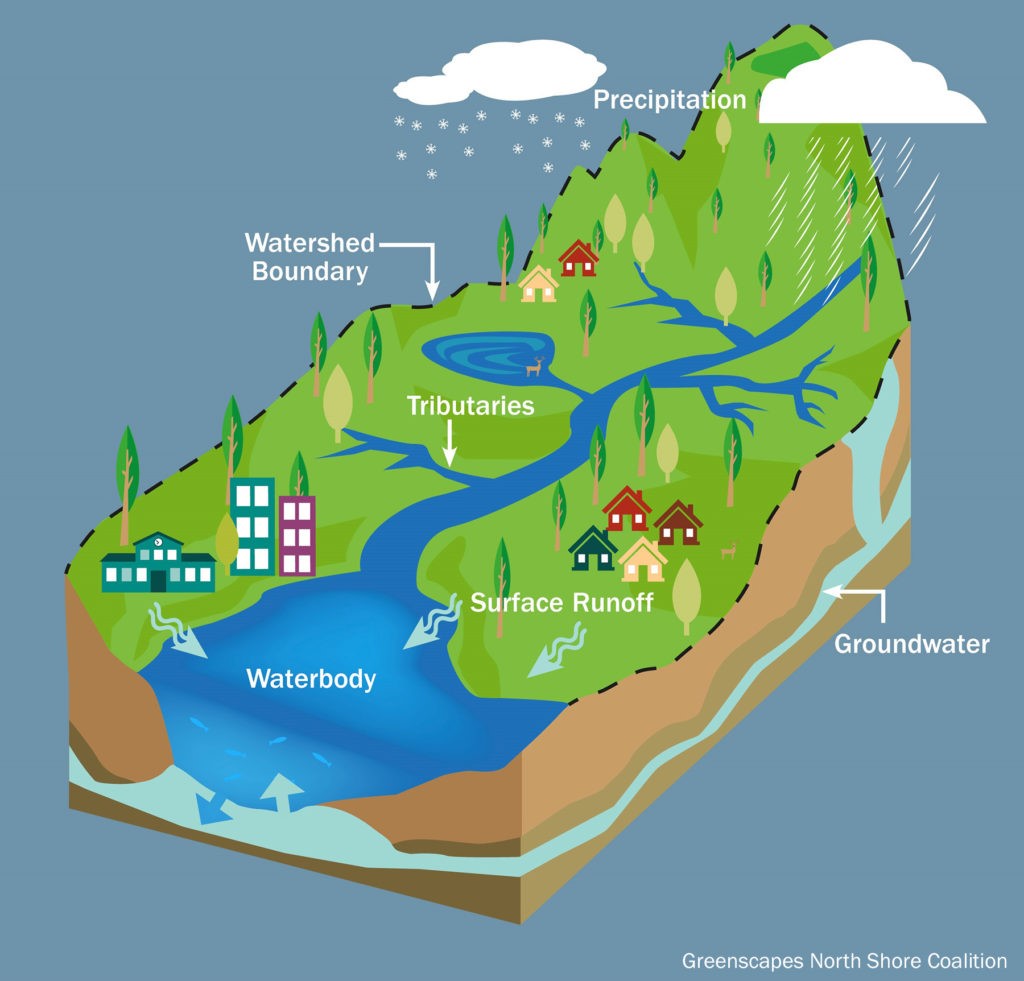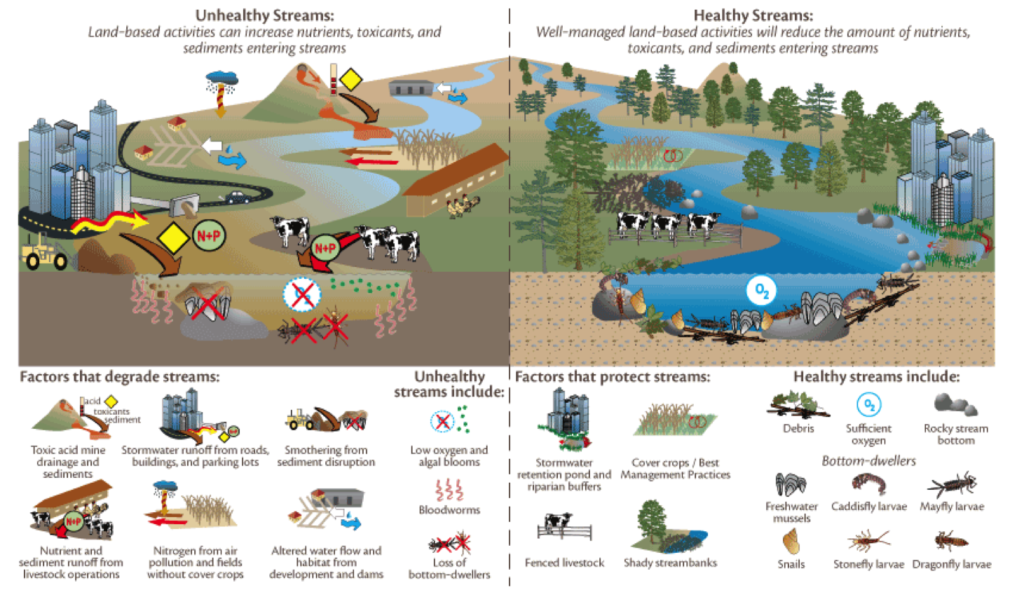What is a Watershed?
A watershed is an area of land that drains all water (rainfall, snowmelt, spring water, etc.) to a common outflow point such as an estuary, bay, or ocean.
In the case of the Wheatley River watershed, all water that occurs within the watershed boundary is drained into the Wheatley River. These borders can be identified by tracing a line along the highest elevations between two areas. Maps of the Wheatley River and its associated watersheds are available here.

This diagram depicts a typical watershed that starts with small headwater streams in the higher elevations of the drainage basin. Water flows downhill from the drainage divide into streams, which combine and eventually form a river. As more tributary streams join the river, the volume of water increases, and is eventually discharged through a common outflow point.
Not only does water run into the streams and rivers from the surface of the watershed (surface water), but water also filters through the soil (groundwater), and most of this water eventually drains into the same streams and rivers. Groundwater discharge via springs and seeps is the lifeblood of PEI streams, responsible for roughly two thirds of the average annual stream flow. During summer dry spells, nearly all of PEI stream water is from groundwater discharge, which also contributes cooler water temperatures.
Watershed Health
Watersheds directly affect water quality and the health of the people and wildlife that live there.
Healthy watersheds provide clean water and other important benefits such as productive fisheries and outdoor recreation, thereby supporting our economy, environment, and the quality of life of all residents. Our landscapes and waters are highly interconnected: water quality is primarily determined by the condition of the surrounding watershed. Land use, invasive species, geomorphology, and population, road, and housing density are just a few of the many factors influencing watershed health.
Unfortunately, human activities have greatly damaged many waters and their watersheds. In unhealthy watersheds, pollutants wash off the land and contaminate the water, harming both aquatic life and humans. Damaged watersheds are also less resilient to the effects of climate change.
According to the United States Environmental Protection Agency, key components of a healthy watershed include:
Intact and functioning headwater streams, floodplains, riparian corridors, biotic refugia, in-stream habitat, and biotic communities
Natural vegetation in the landscape
Hydrology, sediment transport, fluvial geomorphology, and disturbance regimes expected for its location
References:
EPA. Healthy Watersheds Protection: Basic Information and Answers to Frequent Questions. https://www.epa.gov/hwp/basic-information-and-answers-frequent-questions#what, 19/02/2021.
Harris M, Dupuis T, Guignion D, MacFarlane R, 2012. Technical Manual for Watershed Management on Prince Edward Island. Prepared for the PEI Watershed Alliance, PE.
NOAA. What is a Watershed? National Ocean Service website, https://oceanservice.noaa.gov/facts/watershed.html, 26/02/2021.

